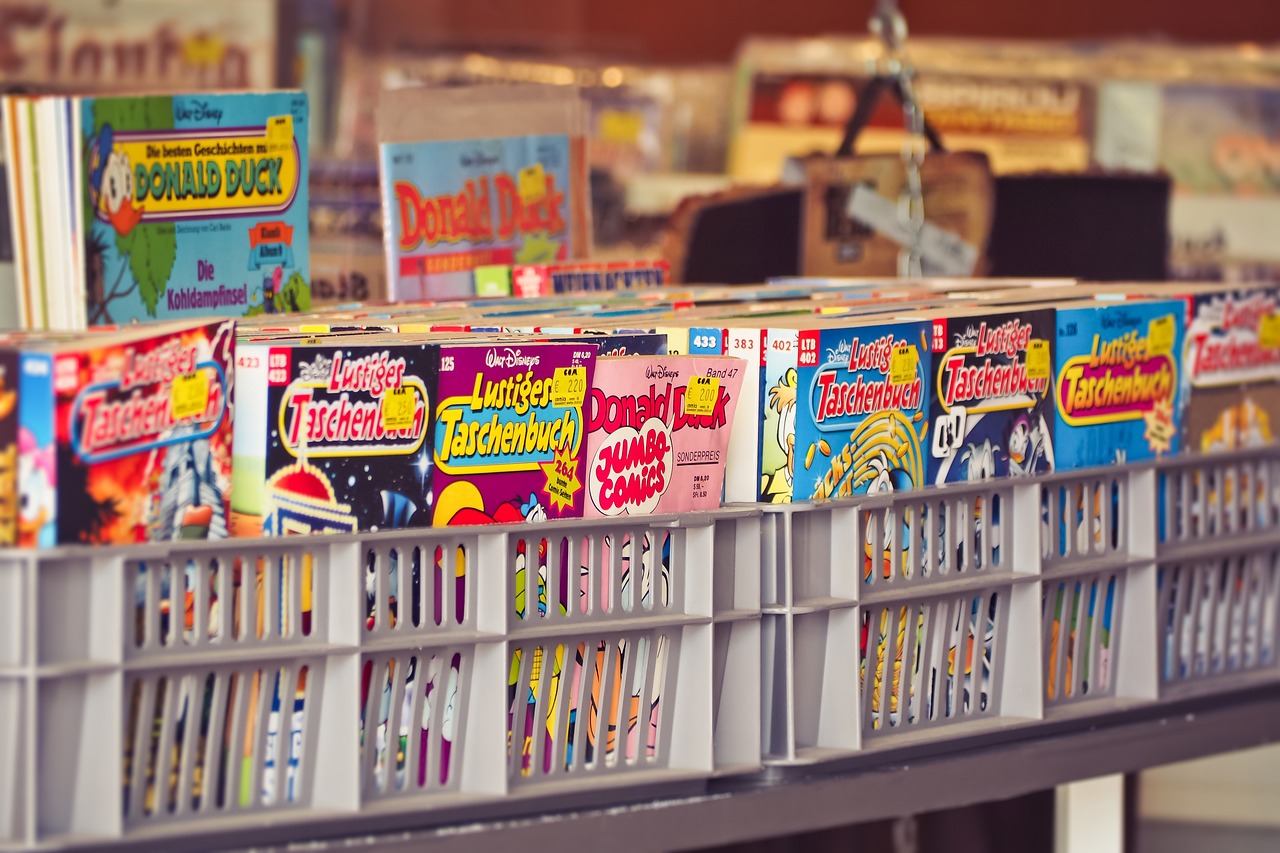Are you interested in creating your own comics or graphic novels?
One of the most important components of sequential art is crafting engaging comic panels. By mastering this art form, you can draw your readers in and keep them hooked from panel to panel.
In this article, you’ll learn about the medium of comics and how to choose the right panel layout to tell your story effectively. You’ll also discover how to create dynamic compositions, use color and lettering effectively, and find tips and tricks for crafting engaging panels that will make your comics stand out.
Whether you’re a beginner or an experienced artist, the art of sequential art is a skill that can take your storytelling to the next level.
Understanding the Medium of Comics
You may find it helpful to understand the unique characteristics and limitations of the comic medium when crafting engaging panels. Comics have a long and rich history, evolving from early cave paintings to the modern-day graphic novel. They have played a significant role in popular culture, from superhero comics to political cartoons, and have even been used as a form of protest art.
Comics are unique in their ability to combine words and images to tell a story. Panels are the building blocks of a comic, and each one has a specific purpose. The size and shape of a panel can affect the pace and tone of a story.
Understanding the cultural significance of comics can also help you create more engaging panels. Comics have been used to explore social issues, challenge political systems, and give voice to underrepresented communities. By understanding the history and cultural significance of comics, you can create panels that resonate with your audience and convey your message effectively.
Choosing the Right Panel Layout
Selecting the perfect arrangement of boxes and lines is crucial in constructing a compelling visual narrative. When choosing the right panel layout, it’s important to balance pacing and emphasize action.
The way the panels are arranged can greatly affect the way the story flows and the emotions it evokes from the reader. The pacing of a story can be controlled through the use of panel size and placement. For example, smaller panels can create a sense of quick movement, while larger panels can slow the story down and give the reader a chance to take in more details.
Additionally, the placement of the panels can affect the story’s pacing. Placing panels close together can create a sense of urgency and fast-paced action, while placing them farther apart can give the reader a moment to breathe and take in the scene.
By balancing pacing and emphasizing action, a well-constructed panel layout can enhance the impact of a story and keep readers engaged from start to finish.
Creating Dynamic Compositions

To achieve a visually compelling narrative, it’s essential to create dynamic compositions that effectively convey the story’s emotions and message.
Visual storytelling is an art that requires careful consideration of framing techniques to create a sense of movement and depth in each panel. One way to achieve this is by using diagonal lines to create a sense of tension or movement within the panel. This technique can be used to guide the viewer’s eye across the page and create a sense of narrative flow.
Another framing technique that can be used to create dynamic compositions is the use of foreground, middle ground, and background elements. This technique can create depth and a sense of scale within the panel. By placing the main subject in the foreground and adding detailed background elements, the viewer can be drawn into the panel and experience the story’s environment.
Overall, crafting engaging comic panels requires a combination of visual storytelling and framing techniques that effectively convey the story’s emotions and message.
Using Color and Lettering Effectively
When using color and lettering effectively in your story, it can elevate the emotions and message being conveyed to the reader. Color psychology plays a huge role in the way we perceive images and can affect our moods and emotions.
When choosing colors for your comic panels, consider what emotions you want to evoke and choose colors accordingly. For example, warm colors like red and orange can convey excitement or danger, while cool colors like blue and green can convey calmness or sadness.
Another important aspect to consider is font selection. The right font can enhance the tone of your story and make it easier for the reader to follow along. Different fonts can convey different emotions, such as a bold font for emphasis or a script font for a more whimsical tone.
It’s important to choose a font that is legible and easy to read, especially when incorporating dialogue into your comic panels. Ultimately, using color and lettering effectively can make your comic panels more engaging and memorable to your readers.
Tips and Tricks for Crafting Engaging Panels
Creating captivating and dynamic scenes is crucial for keeping readers hooked on your story, and there are several tips and tricks to achieve this. One way is by balancing dialogue, action, and sound effects.
Panels that consist solely of dialogue can become stagnant and uninteresting, so incorporating action and sound effects can add depth and excitement to the scene. However, it’s important to not overload the panel with too much information, as it can become cluttered and confusing. Finding the right balance between these elements is key to crafting engaging panels that will keep readers invested in your story.
Another way to create engaging panels is by playing with perspective and point of view. Changing the angle of the panel or switching between different characters’ perspectives can add visual interest and keep the story from becoming too predictable.
For example, using a close-up shot of a character’s face during an emotional scene can convey their feelings more effectively than a wide shot. Additionally, using unusual angles or perspectives, such as a bird’s eye view or a worm’s eye view, can add a unique and interesting perspective to the story.
By incorporating these tips and tricks, you can create dynamic and captivating panels that will keep readers coming back for more.
Frequently Asked Questions
How do comic artists choose the right paper and tools for their work?
When choosing paper types, consider weight, texture, and finish. Drawing utensils vary from pencils, pens, and brushes, with different effects. Experiment with different combinations until you find what works best for you.
What is the typical workflow for creating a comic panel, from ideation to final product?
When creating a comic panel, start with brainstorming techniques to generate ideas and concepts. Visual storytelling is key to creating an engaging final product. From there, refine your sketches and choose the right tools to bring your vision to life.
How do comic artists collaborate with writers and editors to ensure a cohesive and engaging story?
Collaborating with writers and editors is key to creating a cohesive and engaging comic story. The collaborative process requires clear communication to ensure all parties are on the same page and working towards the same goal.
What are some common mistakes beginner comic artists make and how can they avoid them?
Common beginner mistakes include poor panel layout, inconsistent character designs, and confusing storytelling. To improve, study storytelling techniques, practice drawing from life, and seek feedback from other artists and readers.
How do comic artists stay motivated and overcome creative blocks during the panel creation process?
To stay motivated and overcome creative blocks, you must find inspiration from various sources and keep your creativity flowing. When facing setbacks, comic artists push through by taking breaks, seeking feedback, and reminding themselves of the end goal.
Conclusion
Congratulations! You now have a solid understanding of the art of sequential art and how to craft engaging comic panels.
By grasping the medium of comics, choosing the right panel layout, creating dynamic compositions, and using color and lettering effectively, you can create a visually stunning and emotionally engaging comic.
Remember to experiment with different layouts, compositions, and techniques to find what works best for your story. And don’t be afraid to take risks and try something new.
With practice and persistence, you can master the art of sequential art and create comics that captivate and inspire your audience.
Happy creating!










